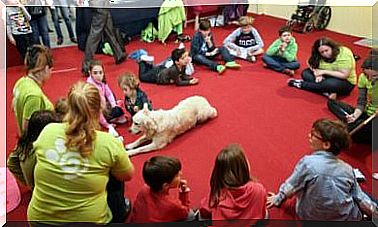Dogs Are Like Humans Make Them

On many occasions we hear topics about dogs such as “this breed is very aggressive”, “this type of dog is very sleepy”, “that other breed is very antisocial” and a long etcetera. What is true in all this?
Well, although it is true that there are characteristics in dogs in general that come from their breed and their genes, it is also true that many others of them are formed by their owners.
Therefore, we must know what to teach a dog and what not, what are the mistakes we make and how to correct them. Your dog will be or will become what you do. Therefore, keep in mind everything that we are going to tell you in this article.
3 most common mistakes when training dogs

Punishment instead of reinforcement
“Punishment is unpleasant and unnecessary when you want to train a dog”
-Ethologist Karen Pryor-
That’s right, instead of punishing the animal, which can turn into abuse and awaken its aggressive side, canine psychologists recommend positive reinforcement. How do you do it?
Well, instead of being aware of everything that the animal does wrong, be attentive to what it does well to reward it. Dogs respond with good attitudes when they know that these will be rewarded and those that are not so good will go away little by little.
Stopping a hitting behavior
Surely we have used the word “STOP” more than once with dogs. Well, this is one of the biggest mistakes you can make. Dogs, like humans, need time to adapt to apply what they have learned. Trying to stop or stop short of a behavior can only cause our dog to become stressed.
Stress can lead you to be sad, not want to eat, not sleep, and even aggressive and antisocial. Do you really want a dog like that? We are sure not. So forget the strict orders and pull love, affection and patience to educate your dog.
Use force
No no and no. Don’t even scare him by hitting a newspaper somewhere. This is cruel and will make the dogs suffer as well as they will grow up in fear making them antisocial and aggressive, looking for a way to defend themselves.
How to train dogs. 5 steps
Take time to teach
Dedicate at least 15 to 20 minutes a day to training your dog or dogs. Don’t pester them with more than one thing. Go by parts; first it teaches one little thing and then another.
Mentally prepare for your workout
If you are happy and with a good attitude, having thought in advance how to make the animal have fun, it will react better. On the other hand, if you scold him every time he does it wrong, the dog or dogs will associate the training sessions with your disappointment and will not be predisposed the next time.
Give immediate rewards
Dogs do not understand the long-term consequences of their actions. Therefore, if your dog does nothing that you should reward and you reward him, he will not associate it with any attitude and you will not teach him anything.
Be consistent
Be consistent with what you teach your dog or dogs. And above all, get the rest of the family to collaborate. For example, if you’ve spent time teaching her not to get on the couch, let the whole family know so they won’t allow her to either.
Ignore their barking

If your dog barks and barks for no reason or for the sole purpose of getting your attention, ignore it. When he calms down and stops barking, give him a treat. Trying to shut him up by throwing a ball or toy at him will only teach him that barking will get him what he wants.
Make your dog obedient, affectionate, social and polite, not only with you and your family members but with other people and other dogs. that does not depend on their race, size or color, but on the education and love, affection and education that you provide.
Your dog will be as you want it to be. Just think well before educating him, what kind of dog or dogs you want to have.
Image courtesy of Gonzalo García Jaubert.









